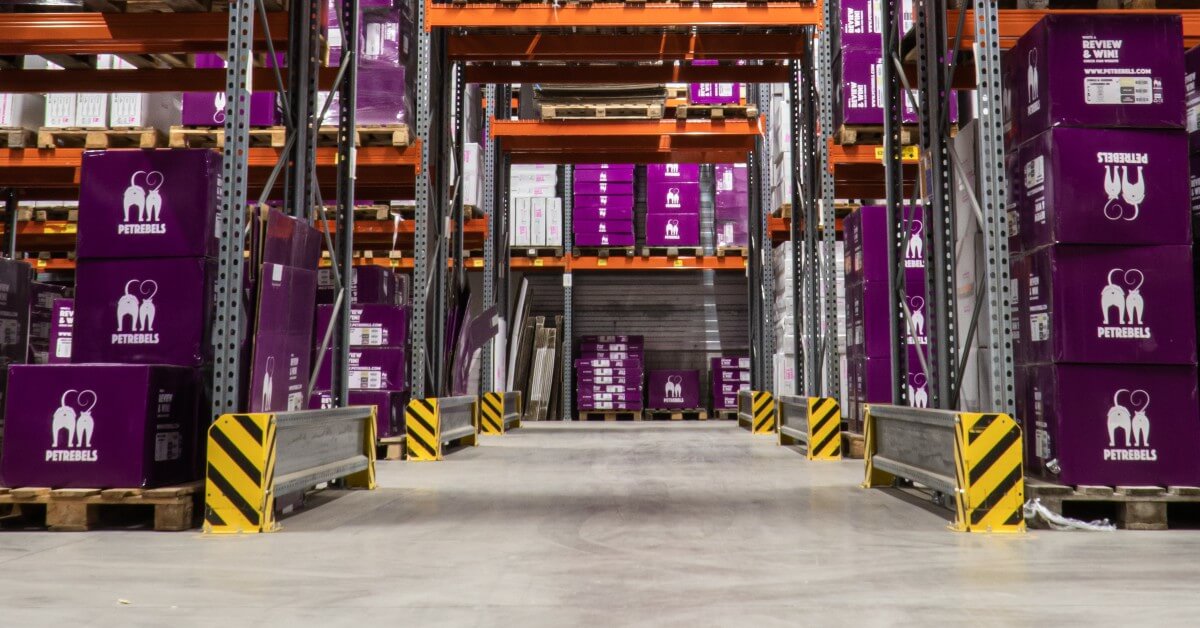RIP Brick-and-mortar.
Well, for the most part. The days of simple brick-and-mortar supremacy have been over for years now. We’ve seen a demand for stores to spread beyond simple eCommerce options, too.
Consumers want access to their favorite sellers across multiple channels, opening up many opportunities: And struggles. omnichannel inventory optimization can be tricky, even for the most experienced retailer.
Imagine this: You have ten shirts in stock across all your warehouses and locations. Three shirts are claimed through online orders. Another four are ordered for buy-online-pickup-in-store, split evenly between your two locations. Four more shirts are purchased in person at your stores.
Uh-oh. Unless my math is incorrect, you’ve just sold eleven out of your ten shirts.
Things can get confusing quickly when you’re attempting to manage inventory across locations, channels, and more. It can be challenging to know what inventory is available in what location, how close you are to a stockout, and more.
Forecasting and planning can also be challenging when working across multiple channels. How can you analyze your sales across all channels to make an accurate forecast? You need to not only understand how many units you’ve sold but how many you’ve sold from each channel, ensure you are ordering sufficient quantities to support all your channels and making sure those products go to the right place to meet each channel’s demand.
Whew. Feeling the stress of omnichannel inventory yet? Don’t worry, you’ve come to the right place.
Let’s discuss the top five struggles associated with omnichannel inventory optimization. With the solutions provided by this post, you’ll be able to support as many channels as you need easily.
Benefits of omnichannel Inventory Optimization
Before we explore the common struggles associated with omnichannel inventory optimization, let’s first answer a simple question: Why should you optimize your inventory across all channels?
In the most general terms, inventory optimization is finding the best way to manage warehouse space, forecast demand, and distribute inventory to save your business capital and increase sales as much as possible.
Some of the benefits you can enjoy when you optimize your inventory across all your sales channels include increased sales due to fewer stockouts, reduced storage costs due to efficient warehouse operations, improved customer experience, and more.
Optimizing inventory across multiple channels comes with many specific challenges, as discussed in this post, but there are also several benefits to selling inventory across multiple channels.
The more channels you can make your products available through, the more revenue you have the potential to generate. What’s standing in the way of exploring additional sales channels for your business? If the logistical piece of the puzzle stops you from spreading to additional channels, you may want to consider implementing a solution like Flieber.
Flieber helps you manage your inventory planning across as many channels as you have! Schedule a demo today to see how Flieber can help your business increase your revenue potential without increasing your headaches.
1. Lack of Coordination Across Channels
If you’re selling across multiple channels, you may also be storing your inventory across multiple warehouses. Your business will need to ensure that you’re not only ordering the right products in the correct quantities… but also that you’re planning for the right quantities in the right location.
For example, if one warehouse ships only to your US suppliers, you will need to plan separately for sales of the same product across Amazon UK and Amazon US.
Related: Supply Chain Challenges: 4 Core Issues For Multichannel Retailers
Additionally, products don’t sell the same across every channel. It’s not just about identifying the total number of products you need and dividing them equally across all your channels. You need to identify and forecast your inventory needs for each channel, then add those forecasts across shared warehouses, and place the orders by warehouse.
When you aren’t coordinating properly across all your channels, you can find yourself stuck with miscommunications, replenishment issues, overcomplicated demand forecasting, and more.
The best solution to this problem is to have a single source of truth for all your sales and inventory data. Rather than siloing your data by channel or location, implement a tool like Flieber that allows you to see all your channels and warehouses separately and view aggregate data across all channels when needed.
2. Supply Chain Opacity
Supply chains are complicated. You must coordinate production, freight, warehousing, sales, and more. When you’re selling across multiple channels, your supply chain’s complexity only increases. Instead of one warehouse, you may have two or more. Rather than working with a single freight or delivery service, you may have several that deliver across various countries or channels.
This innate complexity is what makes supply chain visibility so essential to optimizing inventory for your omnichannel business.
You need to know how many units of each product you have in stock at your warehouse and how many units are in transit. For those in-transit goods, what are the timelines and delivery schedules? Are there any disruptions in your supply chain that you should be aware of? Inventory optimization can be a flashlight that cuts through the murky waters of your supply chain, helping you make the right decisions for your business.
The best solution to an opaque supply chain is to implement a dashboard-like solution that gives you access to all your inventory data in a single view.
You may also want to implement tool integrations that work with your inventory planning dashboard to increase communication and collaboration across your supply chain. For example, Flieber integrates with Anvyl, a production efficiency tool that can help you bridge the gap between your production processes and your end customer.
3. Choosing the Wrong Software For Your Needs
If you’re looking to throw a wrench into your omnichannel inventory optimization efforts, choosing the wrong tool is one of the best ways. You need to be able to rely on your demand planning tool to optimize your inventory processes.
If your tool isn’t stacked with the features you need or provides you with inaccurate forecasts based on partial data, you’ll find yourself wasting time on manual efforts at best and losing money in the form of lost sales from stockouts at worst.
To avoid choosing the wrong software, you’ll want to follow this simple, four-step process:
- Set up a clear data strategy: What data elements do you need to track? How can this data most effectively improve your customers’ experience with your business? How do you plan to standardize data management processes to allow you to trust the data in your software solution?
- Define key features: With your data strategy in place, determine what essential features you need in your supply chain visibility software. Do you need your solution to integrate with an existing tool? Coordinate with all the parties using the software to determine the necessary features.
- Examine reviews and testimonials: The best way to find out the quality of a software solution is to see what real customers are saying about it. Check sites like g2.com or Capterra or the company website for testimonials. Try to find reviews from businesses in your industry.
- See the software in action: Lastly, you’ll be ready to find a solution that meets the desired criteria. If possible, schedule a demo or take the solution for a test drive to get a feel for how it will work for your business on a daily basis.
Flieber offers a robust inventory optimization solution that can help you manage your inventory and demand planning processes across as many channels as your business needs. Our advanced demand planning suite lets you take kits and bundles into account, make real-time adjustments in times of crisis, and more. To see what Flieber can do for you, schedule a demo today!
4. Demand Planning Inefficiencies
If you’re struggling with demand planning across your multiple sales channels, you’re likely struggling with the following consequences:
- Time Waste: Do you manually calculate your demand forecasts using a dozen spreadsheets? This process may work for very small businesses, but manual demand planning isn’t scalable as your business grows. As you spread to multiple channels, manual demand forecasting becomes unwieldy at best and inaccurate at worst.
- Inventory Loss: If you’re not planning properly for future demand, you have more than stockouts to worry about: You may also struggle with inventory loss. Incorrect packaging and inventory storage can damage your stock, causing loss of inventory and cash for your business. Overstocking may also result in overspending on warehousing space or, over time, dead stock that you’ll never be able to move.
You want to implement an automated demand planning solution to mitigate the challenges you may face related to demand planning inefficiencies. By automating your demand planning processes, you not only save time and increase your inventory processes' scalability, but you also reduce the risk of human error.
5. Poor Profit Margins
Succeeding on Amazon—and in eCommerce at large—is all about winning the margins game. The most successful online sellers win by constantly optimizing their margins.
The two most common margin killers are stockout and overstock. If you stock out during a peak sales time, you can lose thousands (or millions, depending on the size of your business) in revenue due to lost sales. To avoid this, many sellers lean heavily on massive amounts of safety stock… but overstocking can be just as painful.
When you overstock a product, you’re trapping business capital in inventory that will not only not produce revenue but will cost you even more in terms of warehousing space your business doesn’t truly need.
The solution to this problem is optimizing your inventory processes across all channels. You can achieve this by adopting a just-in-time model of inventory management. This method requires that you put faith in your demand planning software and keep as little inventory as possible in your warehouse at all times, stocking only what you need, when you need it.
By adopting this inventory management model, you’ll be able to optimize your warehousing space and usage, resulting in better profit margins and helping your business grow.
Managing Omnichannel Inventory Optimization with Ease
In the modern retail and eCommerce environment, omnichannel selling is essential. Direct-to-consumer sellers must manage inventory across Amazon, Walmart, your store website, and more.
Omnichannel inventory planning and management are far from simple. However, that doesn’t mean managing your inventory optimization with minimum headaches is impossible. When you solve the common struggles above, a great next step is optimizing inventory across all your channels and locations without running into trouble like stockouts, dead stock, and overstock.
Flieber’s inventory planning and optimization software offers you all the features and functionality you need to forecast, replenish, and manage inventory across all locations, warehouses, and channels. Schedule a demo today to see how Flieber can help your business level up its inventory optimization game!



-1.png)

